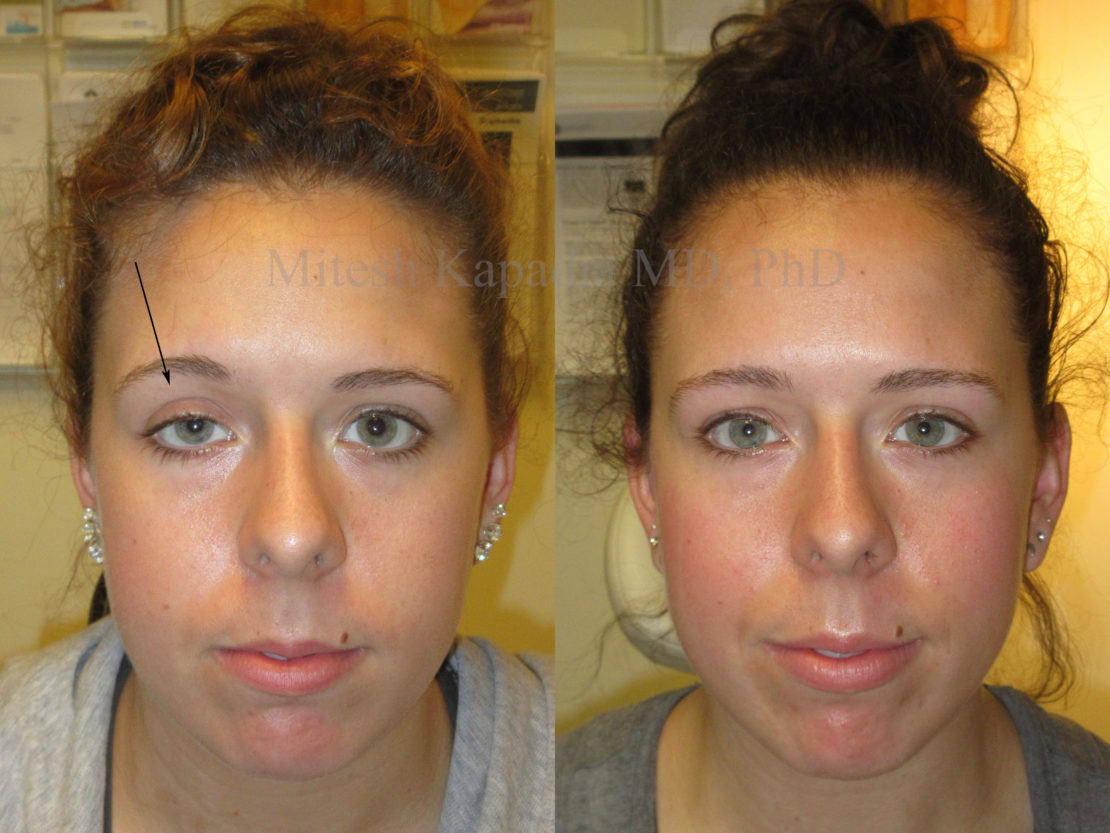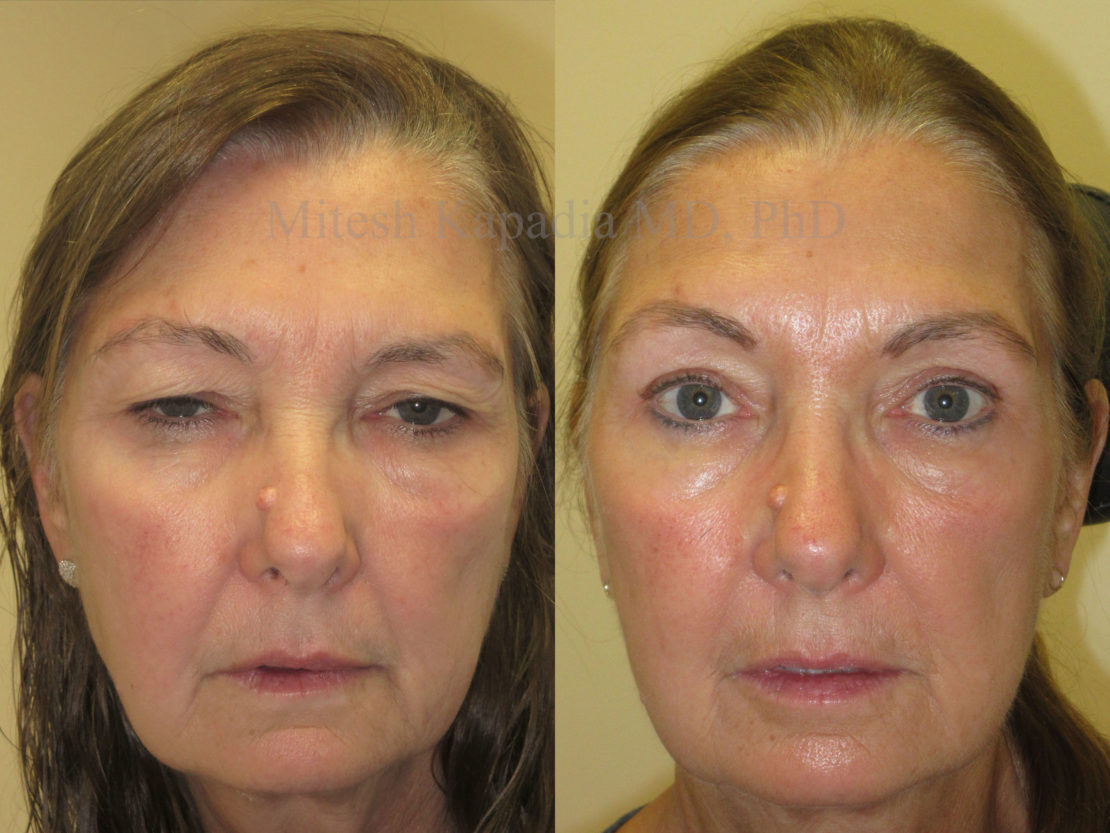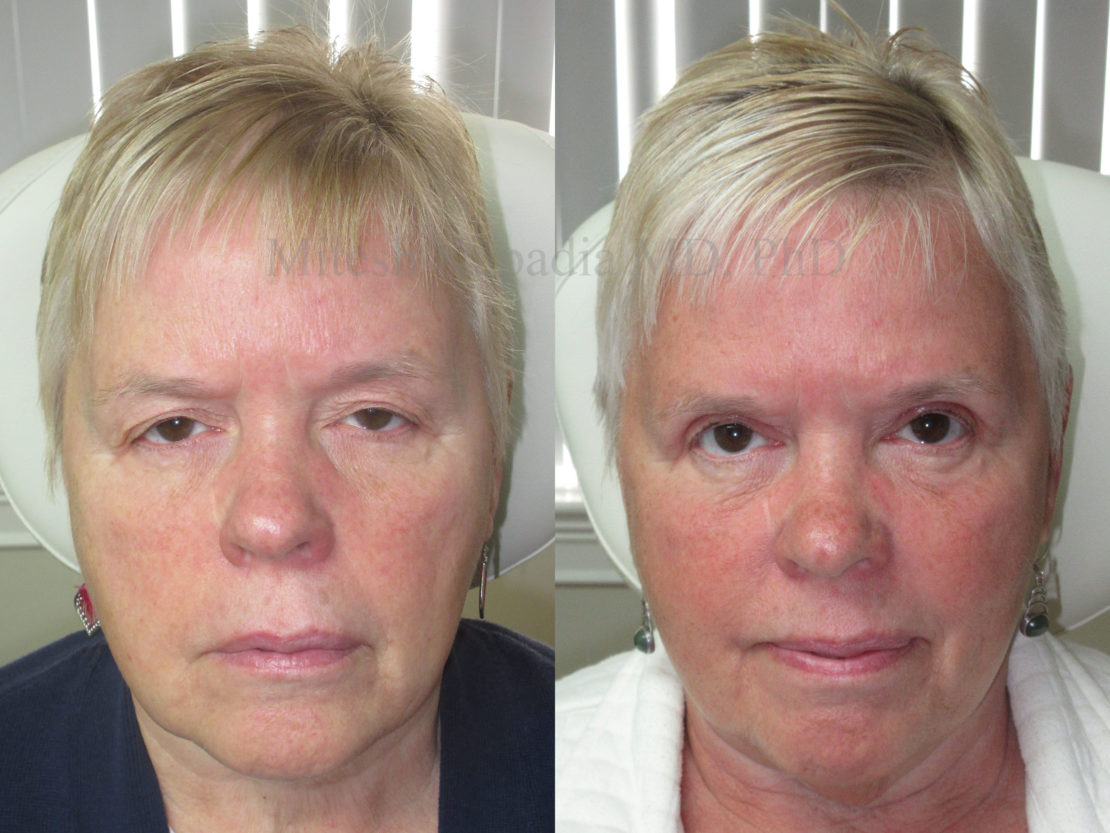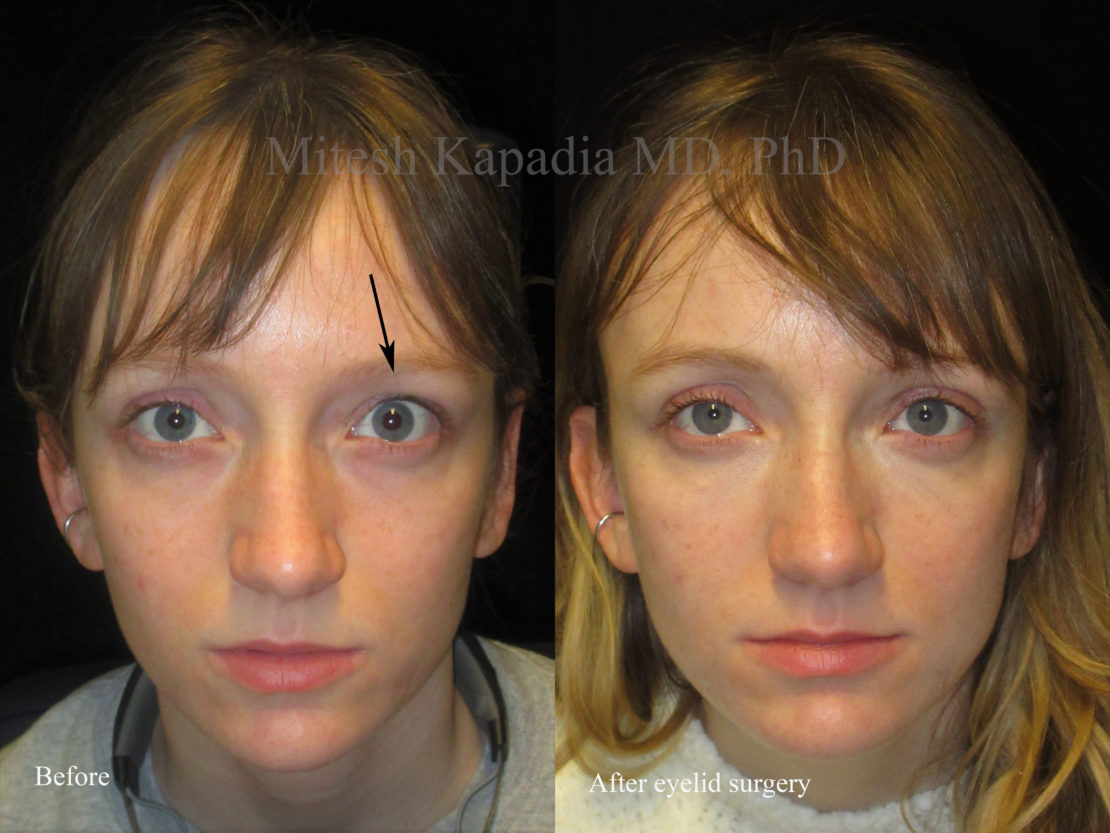This page shows before and after photos of actual patients who have had ptosis repair surgery with Dr. Mitesh Kapadia. Ptosis refers to a condition in which the height of one or both upper eyelids is too low. Ptosis surgery usually involves shortening one of the two muscles which helps open the eyes to raise eyelid height. This is different than upper blepharoplasty surgery, which involves removing excess skin from the upper eyelids. The different causes of droopy eyelids and the procedures used to fix them are described in the articles section of this website.
Ptosis patients often complain of looking tired, enebriated or stoned. When ptosis is present on one side only, patients often dont like the asymmetry and lack of balance.
Eyelid retraction is the opposite problem as ptosis, where the upper eyelid is too high. Patents with this condition often feel like they have an "evil" look or appear that they are staring at someone when talking to them. The most common cause of eyelid retraction is thyroid eye disease.
Note that adjusting the eyelid height with either ptosis repair or eyelid retraction surgery is an inexact science and most patients do not achieve perfect symmetry. The goal of surgery is improvement in the underlying condition and improvement in symmetry even if its not perfect.
Patient 1 - Before and three months after ptosis repair surgery right eye.

These photos show a woman in her 20s before and after ptosis repair surgery to her right upper eyelid. The drooping of the eyelid is corrected giving her improved symmetry and a more balanced look.⠀
⠀
This surgery takes less than 10 minutes to perform but, in terms outcomes, it is the most difficult surgery I do. The goal of ptosis surgery is to improve eyelid position, but not everyone comes out this even. After the surgery heals, the operated eyelid may end up a little higher or lower than the opposite side. Sometimes when you fix an eyelid that droops, the other side drops down and a second surgery on that side is needed to improve symmetry.⠀
⠀
Because this surgery is so finicky, an in person consult is needed to see if a patient is a candidate. Again, the goal is to improve eyelid position. I always tell patients that if you will only be happy if it’s exactly even, it’s not worth doing the surgery. A realistic goal is usually a 50% improvement in the height difference between the two eyes.⠀
Patient 2 - Before and three months after ptosis repair surgery right eye and bilateral upper blepharoplasty

These photos show a woman in her early 60s before and three months after ptosis repair surgery on the right and upper blepharoplasty on both sides. Prior to surgery, both eyes were closed, with the right side drooping more than the right.
Patient 3 - Before and two months after ptosis repair surgery

These photos show a woman in her early 60s before and after ptosis repair surgery on her left upper eyelid. Before surgery, the eyelid droops over her pupil, blocking her vision and making her looks unbalanced and tired. After surgery, she looks more symmetric and awake.
Patient 4 - Before and two months after bilateral ptosis repair and upper blepharoplasty.

These photos show a woman in her 60s before and after ptosis repair and upper blepharoplasty surgery. Prior to the procedure, she had severe drooping of her upper eyelids making her look tired and causing difficulty with her vision. Surgery involved removing excess upper eyelid skin as well as resecting the eyelid elevator muscles so her eyes open better. After surgery she looks younger and more refreshed and also sees better.
Patient 5 - Before and one month after eyelid retraction repair

This photo shows a woman in her 20s before and after correction of eyelid retraction. In eyelid retraction, the height of the eyelid is too high, unlike ptosis when it is too low. Prior to the procedure her left upper eyelid is too high, giving her a startled look. After the procedure her symmetry is improved and her eyes have a more normal appearance.⠀
⠀
In this patient the eyelid position was due to over correction of ptosis from a prior surgery elsewhere. Many patients with Graves’ disease have a similar problem.⠀
⠀
Adjusting the height of an eyelid is an inexact science. This goes for surgery to lift the eyelid (ptosis repair) as well as surgery to lower the eyelid (retraction repair). The goal is improvement in eyelid position. It’s often not possible to get an exact match. This patient was thrilled to have her eyes look more even and not feel self conscious that she looked startled.⠀
Ptosis surgery can be performed through an incision in the crease of the eyelid (external ptosis repair) or through and incision on the back of the eyelid (internal ptosis repair aka mullers muscle resection or mullerectomy). Most of these procedures are performed in the operating room under intravenous sedation, but surgery can sometimes be performed in the office with local anesthesia only. The choice of anesthesia type depends on a number of factors and is best discussed at the time of consultation.
As mentioned previously, adjusting the height of the eyelid is an inexact science and patients aren't always symmetric after surgery. Its extremely important to have a discussion about expected results at the time of your consult.
Ptosis surgery can be performed on its own, but can also be combined with upper blepharoplasty surgery. As with most other eyelid surgeries, Dr. Kapadia recommends taking two weeks off of work for most people, but many patients choose to return to work earlier.
